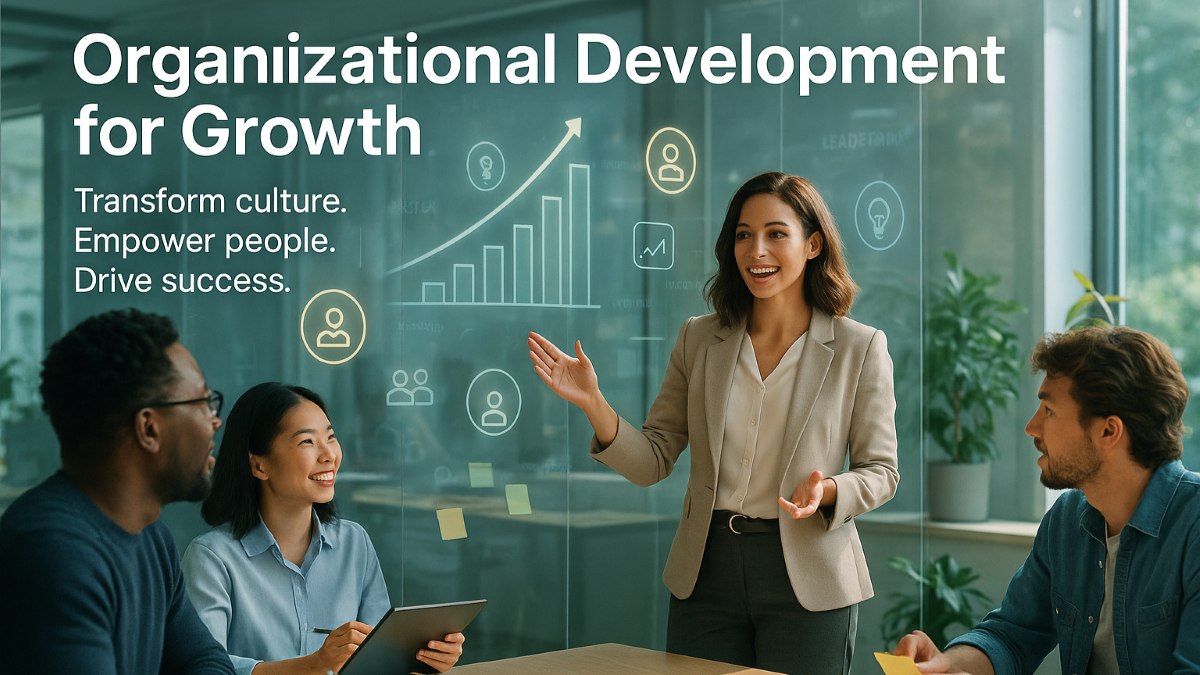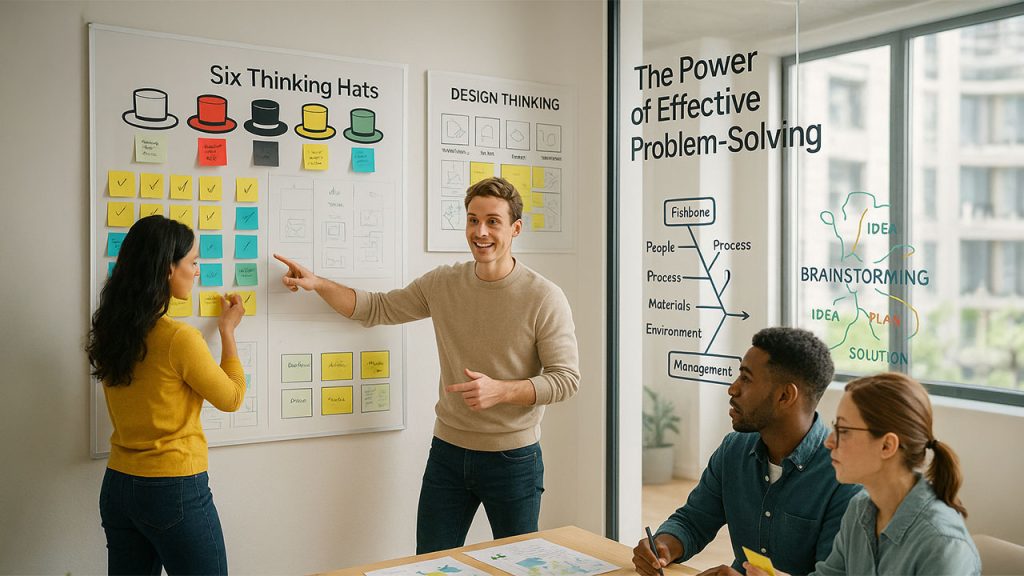Building effective business strategies requires making informed decisions. Each employee must be qualified and possess a strong knowledge base. The modern business world is highly competitive. This reality drives organizations
Building effective business strategies requires making informed decisions. Each employee must be qualified and possess a strong knowledge base. The modern business world is highly competitive. This reality drives organizations to pursue constant growth and improvement. Organizational development is key to achieving stable and managed production. This approach encompasses the entire organizational structure. Employees learn to take ownership of their thoughts and behaviors. There is a shift in workplace culture and an improvement in leadership. The main goal is to increase organizational efficiency. This happens through developing internal resources and identifying new opportunities.
A purposeful system provides the right approach for continuous improvement. This development helps companies study new market trends. It enables cultural transformation and communication optimization. Today, it is valuable to explore clear definitions of organizational development and its process. Organizational development provides specific cases and essential strategies for change. The improved role of leadership in this implementation is critical. Development begins with a continuous cycle of improvement and knowledge enhancement. This method helps companies not only survive but thrive. Examining these issues in the workplace improves adaptability. Employees learn to think critically, which contributes to business growth.
Definition of Organizational Development – The Foundation
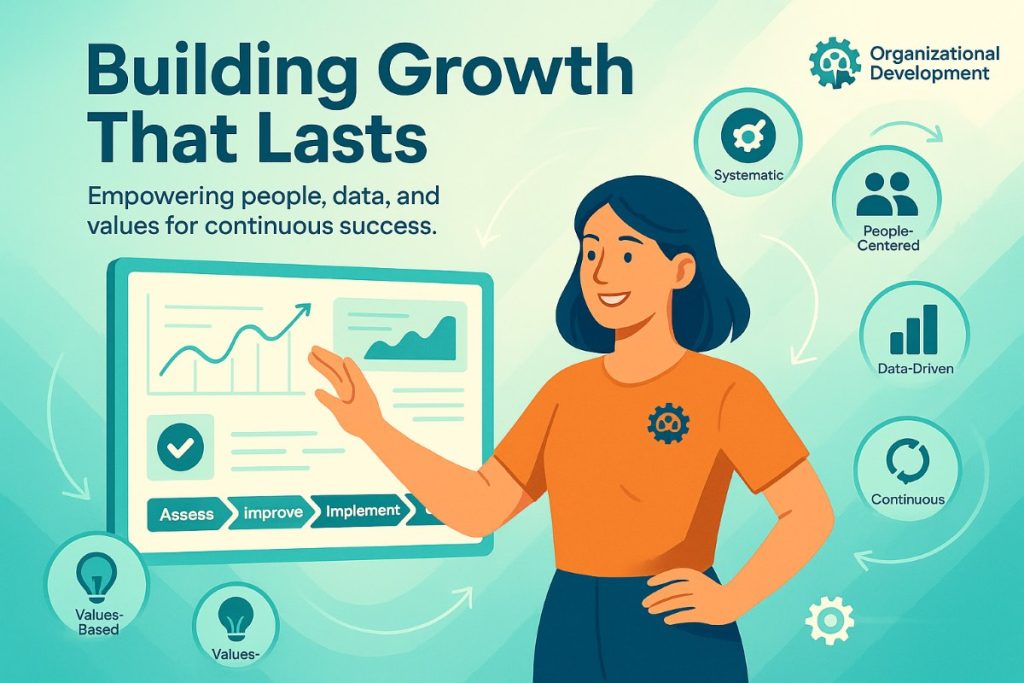
In business, continuous development plays a key role. Development is the foundation of a purposeful and systematic approach. It aims to increase organizational efficiency through continuous improvement. The definition of organizational development and its impact remains highly relevant. Development occurs through undergoing assessments and gaining new knowledge. It is a holistic framework and process that improves workplace interactions. Its foundation lies in organizational management theory. Unlike temporary changes, development creates long-term outcomes. These outcomes focus on values, behaviors, and company culture. All employees adapt to new market conditions and continuously study them. This helps drive technological innovation and evolve process expectations. Here are the key characteristics and definition of organizational development:
- Systematic. Development encompasses organizations of all sizes and capabilities. This approach extends from senior management to operational teams. Being systematic means using improved techniques and methodologies.
- People-Centered. Development creates opportunities to identify and nurture talent. Today, anyone seeking improvement can pursue professional development programs like Langevin. Those interested in leadership and people development can get certified and enhance their knowledge. Engaging people's talents and promoting teamwork directly impacts organizational development.
- Data-Driven. The main principle is to base decisions on measurable indicators. Decisions are guided by analytics rather than intuition alone. This approach enables meaningful analysis and drives success. To understand how analytics and customer insights can strengthen business decisions, explore our detailed guide on data-driven CRM and marketing strategies.
- Continuous. Organizational development skills foster long-term workplace improvement. Continuity consists of ongoing development and continuous enhancement.
- Values-Based. Development transforms mindsets and introduces new approaches to the work environment. This shift in thinking forms the foundation for transformations that enable companies to scale.
The Organizational Development Process – A Step-by-Step Framework
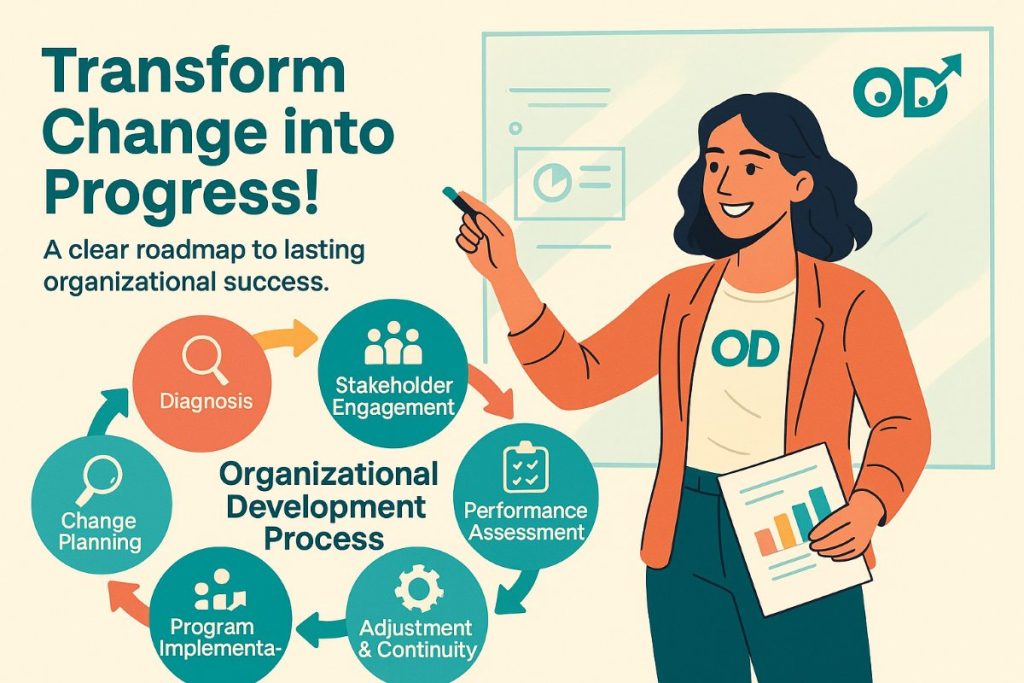
The development process begins with small steps and a structured framework. It consists of specific stages that play essential roles in improving change approaches. Each stage involves analytical processes, planning, and constant interaction. This process guides appropriate workplace behavior and delivers results. Characteristics of effective development include transparency and setting clear goals. The organizational development process also emphasizes people's participation. Equally important is maintaining flexibility to adjust and adapt to new trends. Employees achieve measurable results that drive success. Leadership support is invaluable for initiating changes. A holistic process embeds these changes into the organizational system, creating practical and sustainable capabilities. Here are the main stages of the process:
- Diagnosis. Diagnostics identify organizational weaknesses. In the workplace, diagnostics maximize communication effectiveness. Various interviews and KPI analyses are used.
- Change Planning. In the workplace, clear objectives are established. Employees determine specific strategies, timeframes, and resources that will impact outcomes and drive organizational transformation effectively.
- Stakeholder Engagement. The organizational development process involves experienced individuals. There is active participation from HR teams and leaders in collaborative discussions.
- Program Implementation. Program implementation is an essential component for achieving success in a competitive market. Necessary changes are introduced into critical processes. Implementation also occurs through communication and training initiatives.
- Performance Assessment. Employees engage in performance assessment and analyze all results. The impact on strategy and business indicators is measured and evaluated.
- Adjustment and Continuity. All programs are regularly adjusted and improved. These actions achieve long-term development and sustained competitive advantage through continuous monitoring and strategic refinement processes.
Organizational Development Examples – Real-World Applications
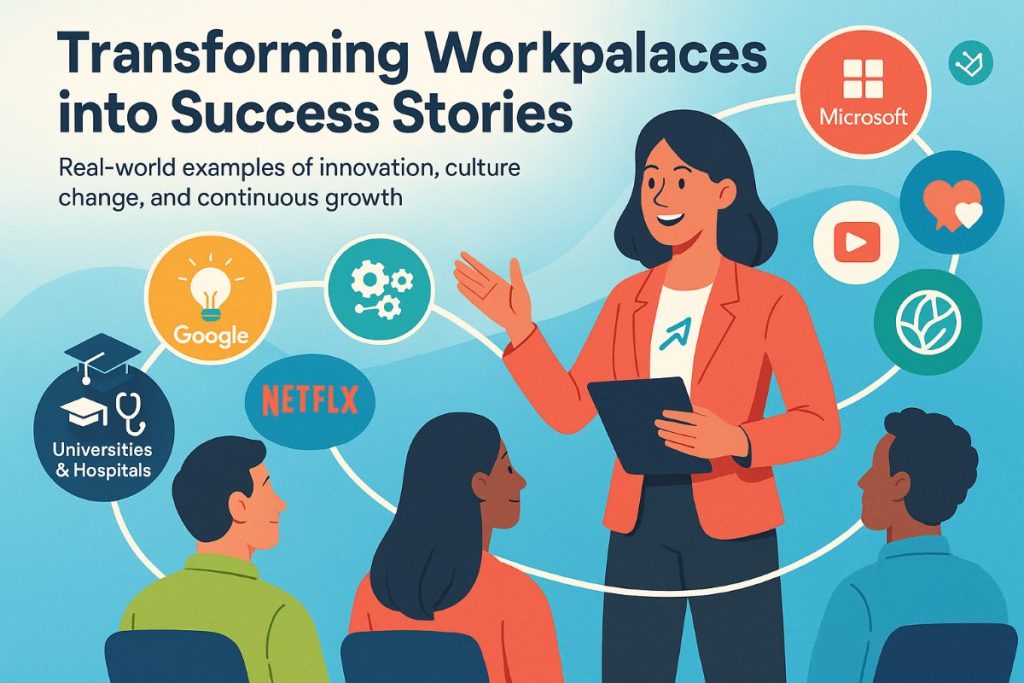
Organizational development skills open new opportunities for doing business. Evaluating real-world examples demonstrates structural changes. The process focuses on cultural shifts that impact the company. Real-world examples extend the benefits in business activities. They serve as powerful tools for transforming organizations. Characteristics of successful cases include strong support from top management. Companies learn to envision the future state and make informed, clear decisions. Investments also play an important role in continuous learning and development. Staff must embrace all new opportunities, undergo assessments, and earn certifications. There are measurable changes in behavior and improved results. Here are prominent organizational development examples:
- Google. Google exemplifies effective team development implementation. Programs focus on psychological safety and creating pathways for innovation while fostering open communication and employee empowerment throughout the organization.
- Microsoft. Microsoft underwent cultural transformation and business restructuring. It shifted from competition to collaboration, embracing a growth mindset and encouraging continuous learning to drive technological advancement and innovation.
- Netflix. Netflix is an excellent example of building a trust-based culture. Autonomy and high accountability are crucial for their business success through transparent feedback systems and empowering employees with decision-making authority.
- IKEA. There is continuous teamwork optimization to improve business performance. This teamwork affects adaptation processes across different markets by promoting cross-functional collaboration and sustainable practices in global operations.
- Universities and Hospitals. Organizational development examples include universities and hospitals. These institutions develop internal leaders through specialized programs. These programs drive results and improve service delivery.
Organizational Development Strategies – Driving Meaningful Change
Effective strategies facilitate significant organizational changes. Strategies deliver tangible results with clearly defined outcomes. These strategies combine human factors, technology, and processes. Characteristics of effective strategies include clear alignment with business goals. Employees demonstrate active participation in management communication. Adaptability to change drives excellent development and new opportunities. The characteristics also include measurable results. The process focuses on long-term perspectives for new industry initiatives. Here are the main attributes of organizational development strategies:
- A cultural change strategy transforms values and behaviors. This environment creates new opportunities for employees and improves their work experience.
- A leadership development strategy forms new teams. Change drivers are developed to achieve targeted success.
- An innovation strategy encourages creativity. It enables rapid adaptation to market changes.
- Equally important is the digital transformation aimed at integrating technologies. Technology integration is necessary to support workplace changes.
- Organizational development strategies include a communication strategy. This strategy ensures transparency and engages new staff effectively.
Organizational Development and Leadership – An Essential Partnership
Continuous development and leadership form an essential partnership. Without strong leadership, development becomes impossible. Leaders complete certification courses and gain valuable credentials. They are the ones who initiate necessary changes within the workplace. Leaders not only manage but also inspire teams. Leaders ensure transformation, sustainability, and drive success. Organizational development and leadership are ideal tools for continuous transformational change. Here is the main role of leaders in development:
This combination creates new changes and ensures their implementation. Leaders significantly influence team communication and group cohesion.
- Development and leadership help build stronger trust. This combination positively affects psychological safety and workplace comfort.
- Leaders significantly influence effective and improved decision-making processes. Development and leadership together support strategic goals.
- Leaders demonstrate personal examples of adaptability and continuous learning. In development, this approach is necessary for success.
- Organizational development and leadership are the best ways to support cultural initiatives. Effective leaders engage innovative thinking strategies and improve communication transparency.
- A leader unites people into cohesive groups. A leader demonstrates empathy and flexibility within the work environment.
- Developmental leadership directs focus toward improved results and organizational outcomes.
Respond to this article with emojis



